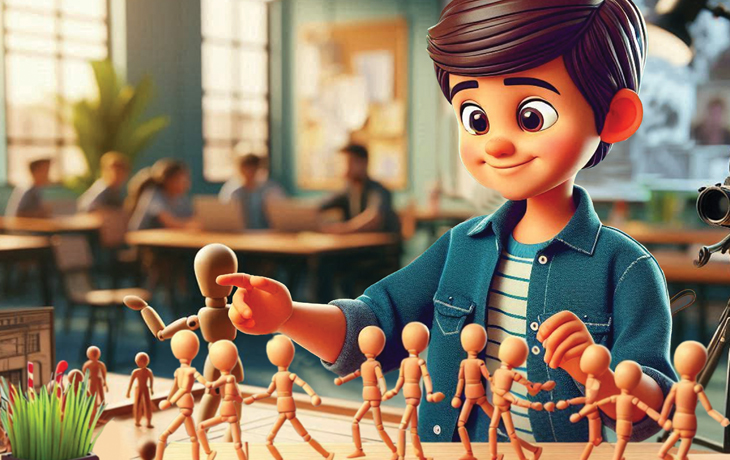
Animation: Bring Stories to Life.
Animation embraces emotions, storytelling and creativity through movements. It entitles imaginative worlds, visualizing compound ideas, and transcending language barriers.
Key Concepts:
A flip book serves as a captivating artifact wherein illustrations spring to life. Drawing successive images on each page to create a sequence that, when flipped rapidly, gives the illusion of motion.
Cut-out animation brings paper dolls to life by moving them in small increments and taking pictures. By putting these pictures together quickly, it appears as if the characters are dancing and talking. It is a creative way to make a puppet show.
Frame-by-frame animation is like creating a tiny movie on a computer. Each picture is drawn slightly different from the last, creating the illusion of movement when played quickly.
Stop motion creates a magical movie with toys by taking pictures of them moving slightly and putting them together quickly to give the illusion of movement by themselves.
Transform pictures or drawings into interactive puppets by adding special points for movement.
A GIF is a short, repetitive animation resembling a tiny movie loop. It depicts a brief storyline in just a few seconds.